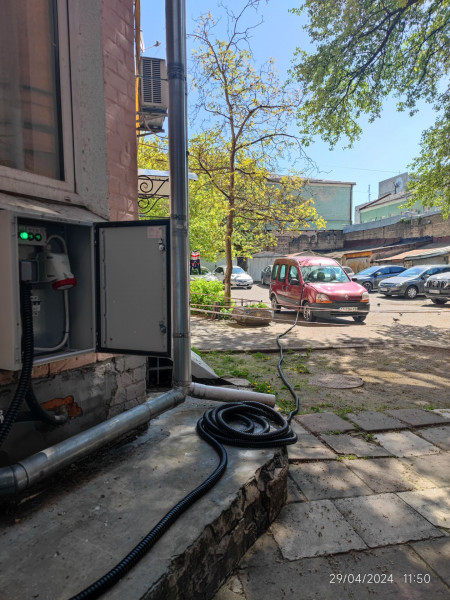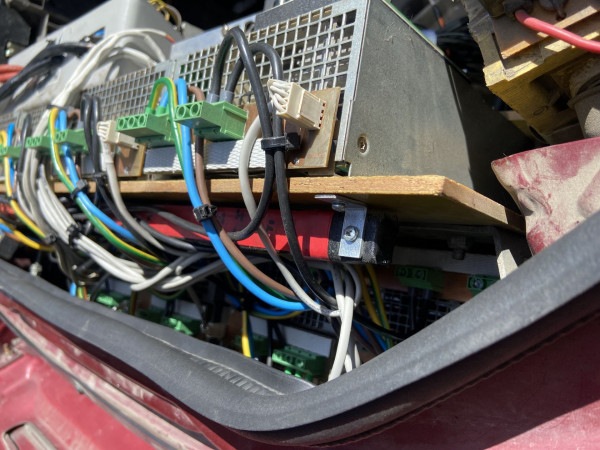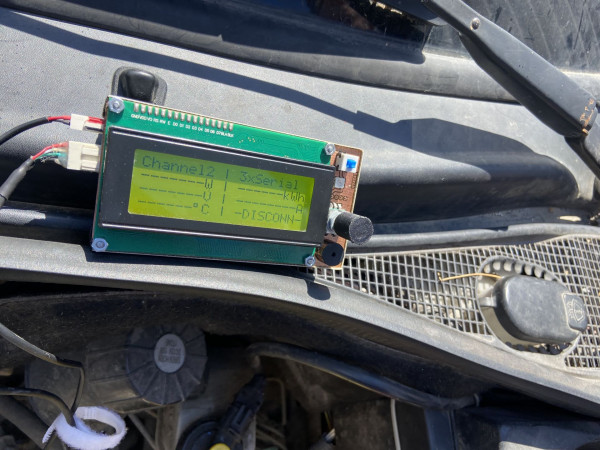Choose the BE MOBILE data-park for colocation, and the DTEL-IX will take care of communication services and cross-connects.
News
Powerbank on the wheels
Published Date
In DTEL-IX, there is a special vehicle that helps maintain communication and saves Kyiv residents from the noise of a running generator during power outages — the Renault Kangoo Electrite 2001. This “grandfather” is an electric vehicle retrofitted to meet the company’s needs, functioning as a self-powered, high-capacity power bank with a 33 kWh capacity.

The main task of this vehicle is to transport electric energy from the nearest data center to the Metro MMR at 7 Leontovycha Street. The energy transfer from the vehicle to the node is quiet and unobtrusive, as the diesel generator located in the cargo area is never used to power the node.
The vehicle autonomously monitors its own battery charge, ensuring engineers can’t accidentally deplete it below the critical level needed to return to the data center for recharging. It also manages the battery charge at the MMR, safeguarding the MMR’s battery management system (BMS) arrays and preventing overcharging.
Neighbors are delighted and grateful, as it lets them sleep and go about their business without disturbance.

The vehicle, at heart, is a telecommunications worker. During its conversion to a high-capacity battery (equipped with a modern battery pack from a Chevrolet Bolt), power supply units from the uninterruptible power system of base station car1848tn were added as an OnBoard Charger.
Previously, such uninterruptible power systems were serviced by Proelectro, but now the car1848tn units are used only occasionally as chargers for batteries of various capacities and voltages. Nevertheless, these power supplies perform exceptionally well, operating in parallel, delivering power to a shared bus, and charging the battery. An interesting feature of these power units is that they can accept both direct and alternating current inputs, functioning as both an AC-to-DC charger and a DC-to-DC converter.

Under the hood, there are 12 of these power supply units, and IT Business Solution developed a custom charging controller on Arduino for them. The controller’s job is to regulate the current for each power unit during charging and protect each one from overload and overheating.
Additionally, the controller has a configuration module for the entire array of power units, enabling the use of reduced-power three-phase charging stations. The controller fits the vehicle perfectly, as if it were built in from the start, and reliably performs its function.
ITBiz, as always, is impressive! Before approaching them for this controller, we had no idea the company had such a diverse skill set.

Along with the new charging controller, the vehicle received a new Type-2 charging port from ITBiz specialists, replacing the original “square” connector. This upgrade allows it to charge at standard EV charging stations without the need for adapters.
It’s as if Renault’s engineers foresaw that their port would one day be replaced with something more modern and powerful, as they designed the charging flap to the perfect size.
And what exactly this vehicle charges and how it operates—we’ll share in the next editions of our important news.



